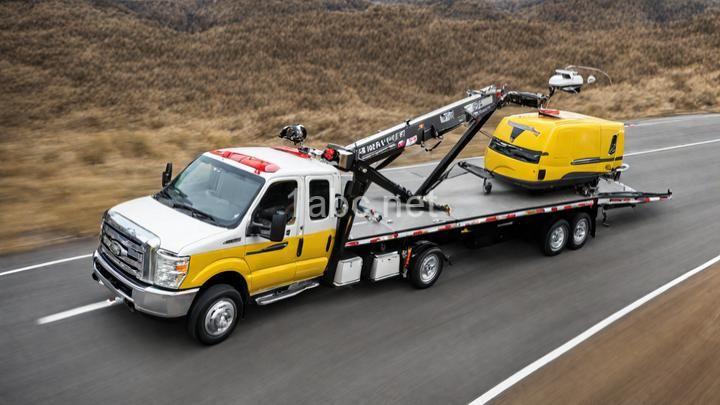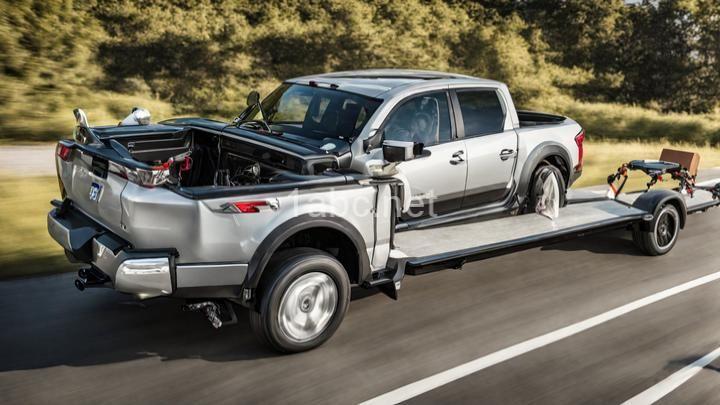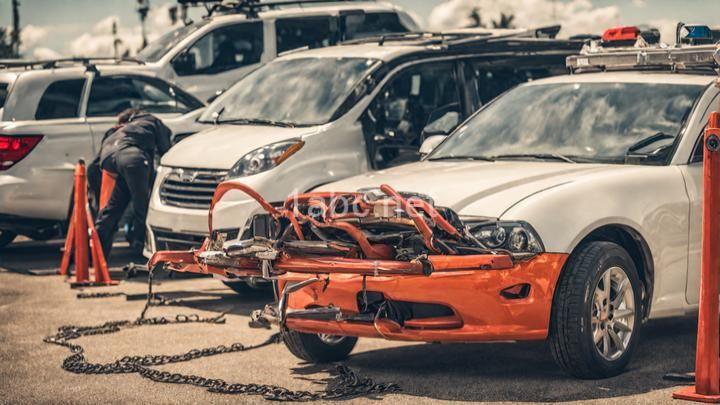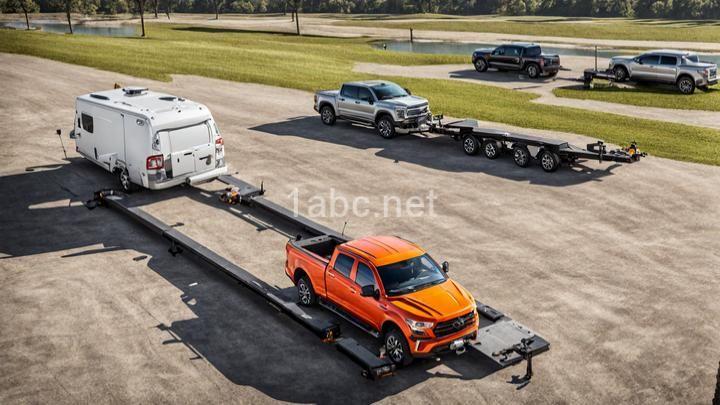A Comprehensive Guide to Essential Towing Equipment

Introduction:
Towing. It's a word that may conjure up images of heavy-duty trucks pulling massive loads, but the truth is, towing is something that many of us may find ourselves needing to do at some point in our lives. Whether it's hitching up a trailer for a weekend getaway or helping out a friend in need, having the right towing equipment is essential for a safe and successful towing experience.
In this comprehensive guide, we will dive deep into the world of towing equipment, helping you understand the basics and choose the essential gear you need. So, buckle up and get ready to learn everything you need to know about towing equipment!
I. Understanding Towing Basics:
Before we delve into the specifics of towing equipment, let's start by understanding what towing is and when it may be necessary. Towing is the act of pulling or hauling a vehicle or trailer behind another vehicle. It can come in handy when you need to transport a car, trailer, boat, or any other heavy load. However, it's important to note that not all vehicles are designed to tow, so it's crucial to check your vehicle's towing capacity before embarking on any towing adventures.
Additionally, it's important to be aware of the legal requirements and safety considerations associated with towing. Each jurisdiction may have specific rules and regulations regarding towing, including weight limits, speed restrictions, and licensing requirements. It's essential to familiarize yourself with these regulations to ensure you are towing within the legal boundaries and keeping yourself and others safe on the road.
II. Hitching and Coupling:
Now that you understand the basics of towing, let's move on to the first essential piece of towing equipment: the hitch. A hitch is a device that connects your vehicle to the trailer or towed vehicle. There are several types of hitches available, including ball mount hitches, pintle hitches, and gooseneck hitches. The type of hitch you need will depend on your vehicle and the type of towing you plan to do.
Properly attaching a trailer or other towed vehicle to the hitch is crucial for safe towing. It involves coupling, which is the process of connecting the trailer's tongue or hitch to the vehicle's hitch receiver. Coupling and uncoupling should always be done carefully and efficiently to prevent accidents and damage to your vehicle or trailer.
To ensure a secure connection, follow these step-by-step instructions:
- Position your vehicle and trailer on level ground.
- Align the trailer's hitch with the vehicle's hitch receiver.
- Lower the trailer's tongue onto the hitch receiver.
- Insert the hitch pin or lock and secure it tightly.
- Cross-check the connection by applying gentle pressure to the trailer to ensure it is properly coupled.
- Finally, attach the safety chains or cables, crossing them under the trailer's tongue for added security.
III. Trailer Brakes and Lighting:
When it comes to towing, safety should always be a top priority. That's why trailer brakes and lighting are essential components of your towing setup. Trailer brakes help you control and stop your trailer effectively, especially when towing heavy loads or driving downhill. There are different types of trailer brakes available, including electric brakes and surge brakes. Electric brakes are controlled by an electrical signal from your vehicle, while surge brakes engage when the trailer pushes against the hitch during braking.
Connecting and adjusting trailer brakes correctly is crucial for safe towing. Here are the steps to follow:
- Ensure your vehicle is equipped with a brake controller that's compatible with your trailer's braking system.
- Connect the trailer's brake wiring to the brake controller in your vehicle.
- Adjust the brake controller settings according to the trailer's weight and braking requirements.
- Test the trailer brakes by applying the brakes in your vehicle. The trailer brakes should engage smoothly and provide adequate stopping power.
In addition to trailer brakes, proper lighting is essential for visibility and safety while towing. Your trailer should have functioning brake lights, turn signals, and reflectors to indicate your intentions to other drivers on the road. Make sure to regularly check and replace any faulty bulbs or damaged wiring to ensure your trailer is visible to others.
IV. Weight Distribution Systems:
If you're towing a trailer with a significant tongue weight, you may need a weight distribution system to ensure safe and stable towing. A weight distribution system helps distribute the tongue weight evenly across all axles of your towing vehicle and trailer. This prevents the front of your vehicle from sagging and improves steering control and braking performance.
To set up a weight distribution system properly, follow these steps:
- Determine the tongue weight of your trailer using a tongue weight scale or by consulting the trailer manufacturer's specifications.
- Choose a weight distribution hitch that's suitable for your towing setup. Consider factors such as the trailer's tongue weight and the towing capacity of your vehicle.
- Install the weight distribution hitch according to the manufacturer's instructions. This usually involves attaching the hitch head to the trailer's coupler and adjusting the tension bars.
- Adjust the tension bars to ensure the trailer and towing vehicle are level when connected.
- Test the setup by towing the trailer and making any necessary adjustments to achieve optimal weight distribution.
V. Safety Chains and Tow Straps:
Safety should always be a top priority when towing, and safety chains or cables are an essential component of your towing setup. Safety chains or cables provide an additional line of defense in case the trailer becomes disconnected from the hitch. They act as a backup, preventing the trailer from completely separating from the towing vehicle and causing a potential disaster on the road.
When attaching safety chains or cables, follow these guidelines:
- Cross the chains or cables under the trailer's tongue to create a cradle shape.
- Attach each end of the chains or cables to the appropriate attachment point on the towing vehicle. Ensure they are secure and have enough slack to allow for turns.
- Avoid excessive slack in the chains or cables, as they should be taut but not so tight that they restrict movement.
In some situations, such as off-road recovery or towing a stuck vehicle, tow straps may be a better option than safety chains. Tow straps are designed to handle heavy loads and provide a secure connection between vehicles. When choosing a tow strap, consider its load capacity and material strength to ensure it can handle the weight of the towed vehicle.
VI. Towing Mirrors:
Good visibility is crucial for safe towing, especially when you're towing wider or longer trailers that obstruct your rearview mirrors. Towing mirrors are an essential accessory that can greatly enhance your visibility while towing.
There are different types of towing mirrors available, including clip-on mirrors and extension mirrors. Clip-on mirrors attach to your existing side mirrors and provide a wider field of vision. Extension mirrors, on the other hand, extend the reach of your side mirrors, giving you a clearer view of the road behind you.
When installing and adjusting towing mirrors, follow these tips:
- Install the towing mirrors according to the manufacturer's instructions.
- Adjust the mirrors to provide a clear view of the sides and rear of your vehicle and trailer.
- Regularly check and readjust the mirrors as needed, especially after hitting bumps or when changing lanes.
VII. Towing Accessories:
In addition to the essential towing equipment we've discussed so far, there are several accessories that can enhance your towing experience and safety. Let's take a quick look at some of these accessories:
-
Trailer Sway Control Devices: These devices help reduce trailer sway caused by crosswinds, passing vehicles, or improper weight distribution. They can greatly improve stability and control while towing.
-
Transmission Coolers: Towing puts additional strain on your vehicle's transmission, which can lead to overheating. Transmission coolers help dissipate heat, preventing potential damage and prolonging the life of your transmission.
-
Brake Controllers: If your trailer has electric brakes, a brake controller is essential for controlling and adjusting the trailer's braking power. It allows you to apply the trailer brakes independently of the vehicle's brakes, ensuring safe and efficient stopping.
Conclusion:
Congratulations! You've now reached the end of our comprehensive guide to essential towing equipment. We hope this guide has provided you with valuable insights and knowledge to help you choose and use the right towing gear for your needs.
Remember, having the right towing equipment is crucial for safe and efficient towing. By following this guide, you'll gain a better understanding of essential tow gear and be well-prepared for your next towing adventure.
So, whether you're planning a cross-country road trip with a trailer in tow or simply helping a friend move, make sure to invest in the necessary towing equipment to ensure a smooth and stress-free experience.
If you find yourself unsure about any aspect of towing or need further assistance, don't hesitate to consult with a professional. They can guide you through the process and provide customized advice based on your specific towing requirements.
Happy towing, and may all your towing adventures be safe and enjoyable!
FREQUENTLY ASKED QUESTIONS
What is A Comprehensive Guide to Essential Towing Equipment?
A Comprehensive Guide to Essential Towing EquipmentTowing equipment plays a vital role in ensuring safe and efficient transportation of vehicles. Whether you're planning to tow a trailer, a boat, or any other heavy load, having the right towing equipment is crucial. Here's a comprehensive guide to help you understand the essential towing equipment you'll need.
-
Hitch Receiver: The hitch receiver is the connection point between your vehicle and the trailer. It allows you to secure the trailer and distribute the weight evenly. Hitch receivers come in various sizes, so make sure you choose the one that matches your vehicle's towing capacity.
-
Ball Mount: The ball mount is the part that attaches to the hitch receiver and provides a secure connection point for the trailer. It comes in different sizes and rises, allowing you to adjust the height of the trailer.
-
Trailer Ball: The trailer ball is an essential component that attaches to the ball mount. It comes in different sizes to accommodate various trailer couplers. Make sure the trailer ball is properly rated for the weight you plan to tow.
-
Safety Chains: Safety chains provide an additional layer of security by connecting the trailer to the towing vehicle. In case the ball mount or hitch receiver fails, the safety chains prevent the trailer from completely detaching.
-
Brake Controller: If you're towing a trailer with electric brakes, a brake controller is a must-have. It allows you to control and synchronize the trailer's braking system with your vehicle, ensuring a safe and smooth stopping experience.
-
Wiring Harness: A wiring harness connects the lights on the trailer to your vehicle's electrical system. It includes brake lights, turn signals, and running lights, allowing other drivers to see your trailer's movements.
-
Towing Mirrors: Towing large trailers or wide loads requires a clear view of the surroundings. Towing mirrors provide an extended field of vision, enabling you to see beyond the trailer and ensure safe maneuvering on the road.
-
Weight Distribution Hitch: If you're towing a heavy load, a weight distribution hitch helps distribute the weight evenly between the trailer and the towing vehicle. It improves stability and reduces the strain on your vehicle's suspension.
-
Trailer Jack: A trailer jack is an essential tool for leveling and stabilizing your trailer when not in use. It makes it easier to hitch and unhitch the trailer, as well as perform maintenance tasks.
-
Tire Pressure Monitoring System (TPMS): A TPMS helps you monitor the tire pressure of both your towing vehicle and trailer. Maintaining proper tire pressure is crucial for safe towing and fuel efficiency.
Remember, it's important to check your vehicle's towing capacity and ensure you have the appropriate towing equipment for the load you plan to tow. Regular maintenance and inspection of your towing equipment are also essential to ensure everything is in proper working condition.
With this comprehensive guide, you'll be well-equipped to embark on your towing adventures safely and confidently. Happy towing!
Why is it important to have towing equipment?
Having towing equipment is important for several reasons. First and foremost, it provides a sense of security and peace of mind knowing that you have the necessary tools to handle unexpected situations on the road. Whether it's a flat tire, engine failure, or a breakdown, towing equipment can come to your rescue.Secondly, towing equipment allows you to assist others in need. Imagine coming across a stranded motorist with a disabled vehicle. With the right towing equipment, you can lend a helping hand and ensure their safety by towing their vehicle to a nearby repair shop or a safer location.
Additionally, having towing equipment can save you time and money. Instead of waiting for a tow truck to arrive, you can take matters into your own hands and get your vehicle to a repair facility quickly. This can help minimize the inconvenience and potential costs associated with extended wait times for assistance.
Furthermore, towing equipment opens up opportunities for outdoor enthusiasts. If you enjoy activities like camping, boating, or off-roading, having the proper towing gear allows you to transport your recreational vehicles, such as trailers, boats, or ATVs, with ease.
Lastly, it's essential to have towing equipment because it ensures compliance with local regulations. Many jurisdictions require vehicles to be equipped with certain towing accessories, such as tow hitches, safety chains, and trailer lights, to ensure safe and legal towing practices.
In summary, having towing equipment is important for your own peace of mind, the ability to assist others, saving time and money, pursuing outdoor activities, and complying with local regulations. So, it's wise to invest in the necessary towing gear and be prepared for any unexpected situations on the road.
What are the different types of towing equipment?
When it comes to towing equipment, there are several different types available. Here are some of the most common ones:
-
Tow Straps: These are strong, durable straps made of nylon or polyester that are used to tow vehicles. They are typically equipped with hooks on both ends, which can be attached to the towing vehicle and the vehicle being towed.
-
Tow Chains: Similar to tow straps, tow chains are also used for towing vehicles. They are made of metal and are known for their strength and durability. Tow chains are often used in heavy-duty towing situations.
-
Tow Dollies: A tow dolly is a small trailer that is used to tow vehicles. It has two wheels and a ramp on which the front wheels of the towed vehicle are placed. The other end of the tow dolly is attached to the towing vehicle.
-
Flatbed Trailers: Flatbed trailers are widely used for towing larger vehicles or multiple vehicles at once. These trailers have a flat surface, allowing vehicles to be loaded and secured easily. The entire trailer is then hitched to the towing vehicle.
-
Wheel Lifts: Wheel lifts are a type of towing equipment that is commonly used by towing companies. They are designed to lift one end of a vehicle off the ground, allowing it to be towed with the remaining wheels on the road.
-
Sling Towing: Sling towing involves the use of a sling or strap that is wrapped around the towed vehicle's frame or axle. This method is less common today but may still be used in certain situations.
Remember, the type of towing equipment you need will depend on the size and weight of the vehicle you are towing, as well as the specific towing requirements. It's always important to choose the right equipment and follow proper towing procedures to ensure safety on the road.
How do I choose the right towing equipment for my needs?
Choosing the right towing equipment for your needs can be a crucial decision, as it directly impacts the safety and efficiency of your towing experience. Here are some steps to guide you in selecting the appropriate towing equipment:
-
Determine your towing capacity: Start by checking your vehicle's towing capacity. This information can usually be found in your vehicle's manual or on the manufacturer's website. Knowing your vehicle's towing capacity will help you choose equipment that can handle the weight of your load.
-
Consider the type of trailer or load: Identify the type and weight of the trailer or load you intend to tow. Different towing equipment is designed to accommodate specific types of loads, such as trailers, boats, or vehicles. Knowing the weight and size of your load will help you select the appropriate towing equipment.
-
Choose the right hitch: The hitch is the connection point between your vehicle and the trailer. There are different types of hitches available, such as receiver hitches, gooseneck hitches, and fifth-wheel hitches. Consider factors like the weight capacity, ease of installation, and compatibility with your vehicle when selecting a hitch.
-
Check for safety features: Ensure that the towing equipment you choose includes safety features like trailer brakes, safety chains, and breakaway systems. These features are essential for maintaining stability and preventing accidents while towing.
-
Seek professional advice if needed: If you're unsure about which towing equipment to choose or have specific requirements, it's always a good idea to consult with a professional. They can provide expert guidance based on your vehicle, load, and towing needs.
Remember, towing is not a one-size-fits-all process. It's important to select the right towing equipment that fits your specific needs and ensures the safety of both your vehicle and the load being towed. By following these steps, you can make an informed decision and enjoy a smooth towing experience.



